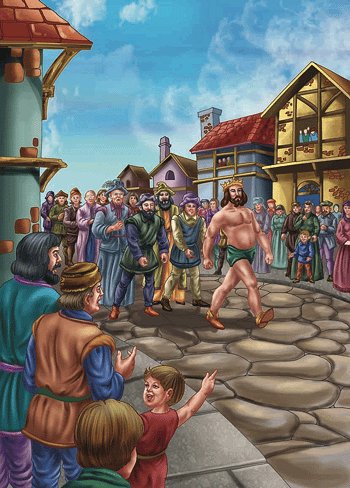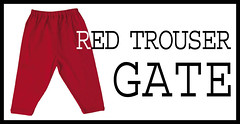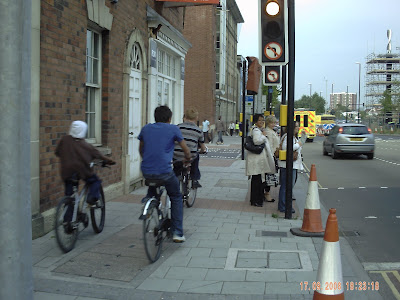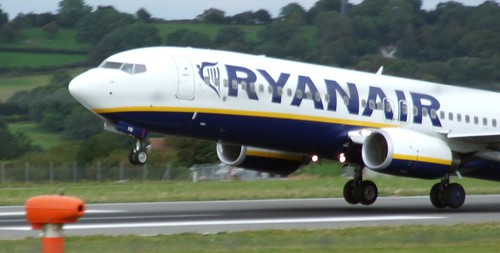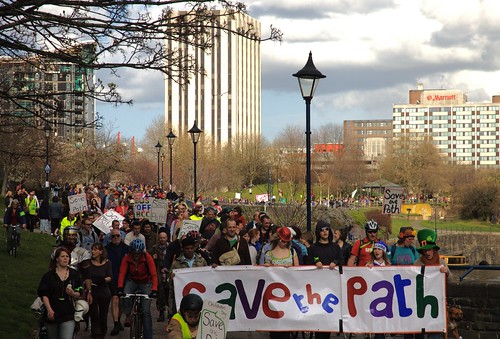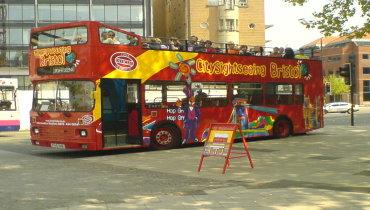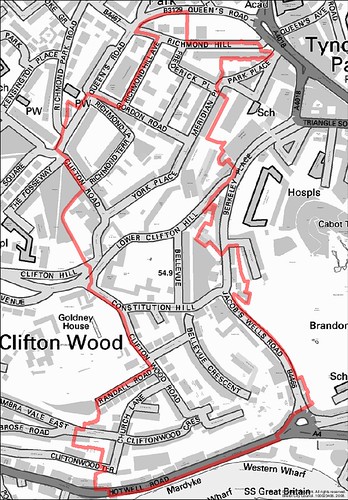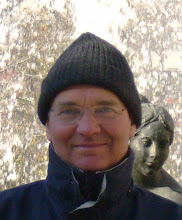As revealed by our guest contributor
Green Tomato
Bristol City Council is committed to finding travel solutions that are right for everyone and we recognise that most people choose driving as their preferred option for getting to work.
- We have addressed the needs of a very vocal minority, cyclists, through ‘Cycling City’
- We have invested millions on developing our award winning Showcase Bus Lanes for those who can’t afford a car
- We have launched our ‘walking strategy’ for those who cannot afford bus fares either.
- Now let's sort out driving!
Manchester city recently voted 4 to 1 against having a congestion charge to pay for significant public transport improvements. This clearly shows that people do not want restrictions on driving and aren’t interested in public transport. We believe that similar sentiments exist in Bristol and as a democratically elected council, we must respond to the will of the people.
This is our most important consultation to date as it affects everyone, even those without cars. You may think ‘I haven't even got a car and don’t go out much, it won’t affect me’. In fact, even the bed bound are affected as without decent car parking and cheap fuel, how will the district nurse and Home Care Team reach them?
Our strategy is divided into 4 areas
Rethinking BRT – keep the greenways greenIn the absence of congestion charging, there will be no government money for bus rapid transit. We have to find a new use for the corridors intended for BRT, such as the Railway Path and the Malago.
The most time pressured group in the morning rush hour are school run mums and builders in pick ups, so we propose using these ‘greenways’ for the exclusive use of those with 4wd vehicles. This has the huge advantage that no alterations are required to the greenways at all – no need for millions of tons of concrete, new bridges, just a few light controlled crossings for the kids. Even better – minimal cost to the council taxpayer!

Can we afford not to let 'off road' vehicles share this space?
ParkingAvailability of parking at the end of a car journey is a key factor in its success as a travel strategy. To this end, we will free up space by allowing drivers to park anywhere they think is safe. Many pavements are unnecessarily wide, or simply underused, and these will be designated 4x4 parking spaces, in recognition that currently these vehicles are discriminated against as normal spaces are not large enough.
Bristol City Council’s ‘Parking Services’ Division generate £3 million a year from legal parking charges but currently make a loss on illegal parking work, so this will be abandoned.

Parking Services: we're not sure what they do eitherThe fleet of parking services vans will continue to be deployed, however, but in a role similar to UN peacekeepers, to observe parking and street scenes but not interfere or issue tickets.
This policy has in fact, been undertaken on a trial basis throughout the city for the last 5 years.
Fastest User Carriageway Utilisation’ (FUCU) Scheme
why put the slowies at the front?‘Advance Stop lines’ at junctions were introduced some years ago at the insistence of the very vocal minority, cyclists. Most motorists however are unaware of their purpose and it is illogical to put the slowest users at the front of the queue. Grand Prix don’t do it and neither will Bristol City Council!
Under the Fastest User Carriageway Utilisation’ Scheme, we will redesignate them as space for the fastest vehicles only, and mark the road accordingly.

The current red/ red&amber/green/amber/red light sequence has remained unchanged for decades, and is no longer ‘fit for purpose’. We will change this in recognition of the need to maximise the number of vehicles passing through on each phase.
The sequence now will be
- Red: stop, as far forward into the junction as possible
- Red and amber :Go
- Green with black tyre marks: accelerate away as quickly as possible, before slow traffic (eg bikes) get in the way
- Amber: Quick, floor it
- Red: keep going
- Very Red: alright 2 more vehicles then
CrossingsPedestrians and cars do not mix well, and most economically useful pedestrians are either on their way from or to their vehicle. Therefore it makes sense to limit crossings in order to keep the traffic flowing, especially near global award winning shopping centres.
Busy Crossings will be altered to tell pedestrians to wait until the lights change then cross quickly, especially on dual carriageways. Less popular crossings will have sensors to detect the number of people waiting, and will only be triggered when more than 20 people (or 30 school children) are waiting.

Zebra crossings, like this one on Blackboy Hill, will be phased out as surely as zebras themselves, as they sometimes hold up cars for seconds and encourage 'spontaneous crossing' by pedestrians who haven't considered fully whether they really need to cross.
They will be replaced by new light controlled crossings, named ‘Pigeon Crossings’. This nomenclature recognises that pedestrians are too numerous, often wear grey clothing and irritate drivers by remaining in the road until the last possible minute.

Pigeon: inspired council crossing policyWe want to hear your views - we are bored with the same old comments on the evening post website . What changes would you like to see us make to protect your right to drive and park wherever you want?
To read more vehicular satire, click this
link.











